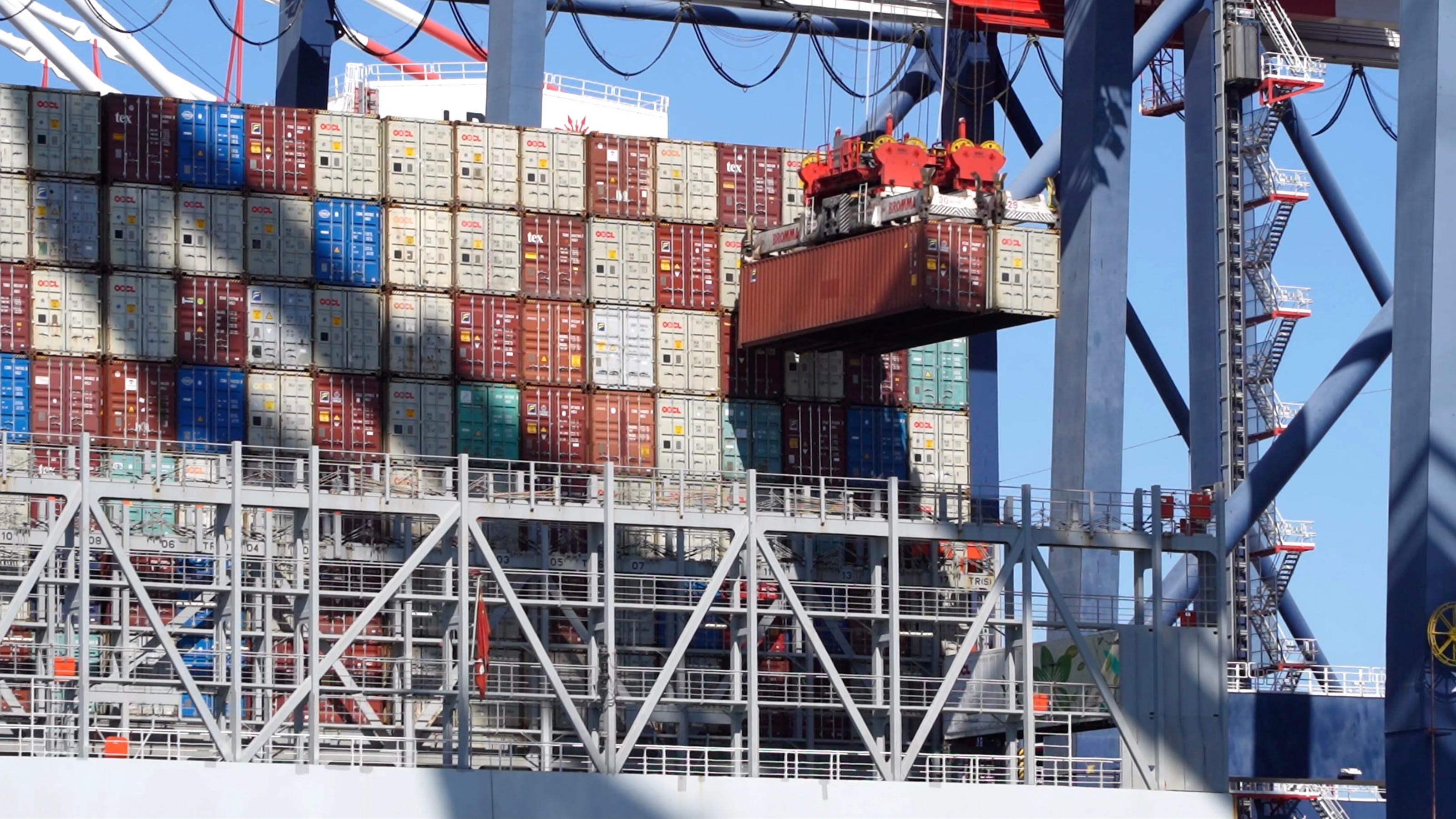Legal Challenge To Trump's Tariffs: The President's Defense

Table of Contents
The Constitutional Authority Argument
The President's defense rested heavily on his claimed constitutional authority to impose tariffs. This argument centered on Article II, Section 2, of the U.S. Constitution, which grants the President significant power in foreign affairs and the making of treaties. The administration argued this implicitly includes the authority to implement trade policies, including tariffs, deemed necessary for national interests.
- Arguments for broad presidential power: The administration stressed the President's role as the nation's chief negotiator in international trade, arguing that the power to impose tariffs is a necessary tool to leverage better trade deals. They pointed to historical precedents of presidents using tariffs for various policy objectives.
- Counterarguments challenging the extent of this power: Opponents countered that while the President has considerable power in foreign affairs, this power is not unlimited and is subject to checks and balances, including judicial review. They argued that the imposition of tariffs is fundamentally a legislative function, reserved for Congress under the Constitution.
- Relevant Supreme Court precedents and their applicability: The applicability of past Supreme Court cases regarding presidential power in trade matters was heavily debated. Both sides cited relevant precedents, attempting to demonstrate the relevance or irrelevance of these past rulings to the specific circumstances of Trump's tariffs.
National Security Justification
A key pillar of the administration's defense was the claim that the tariffs were essential for national security. This argument focused on reducing dependence on foreign suppliers for critical goods and strengthening domestic industries vital to national defense. Specific concerns regarding reliance on foreign sources for crucial materials and technologies were highlighted.
- Evidence presented to support national security claims: The administration presented evidence, often classified, aiming to demonstrate the vulnerability of the US supply chain in various sectors. Reports on potential disruptions and threats to national security were cited.
- Criticisms of the national security justification: Critics argued that the national security justification was a pretext for protectionist measures, lacking sufficient evidence to justify the scale and scope of the tariffs imposed. Concerns were raised about the potential for abuse of the national security exception in trade policy.
- Analysis of whether the tariffs are proportionate to the alleged threat: A central point of contention was whether the tariffs were a proportionate response to the alleged national security threats. Opponents argued that the economic costs far outweighed any potential benefits to national security.
Economic Rationale for Tariffs
The administration also defended the tariffs on economic grounds, asserting they would protect American jobs and industries from unfair competition, ultimately leading to economic growth. Claims were made that tariffs would revitalize specific sectors and reduce the trade deficit.
- Economic data presented to support the claims: The administration presented economic data, often selectively chosen, to support claims of job creation and industry revitalization resulting from the tariffs.
- Counterarguments about negative economic consequences: Critics countered that the tariffs led to higher prices for consumers, reduced economic growth overall, and harmed businesses reliant on imported goods. Studies highlighting negative economic impacts were cited.
- Analysis of the overall economic impact, both positive and negative: The overall economic impact of the tariffs remained a subject of intense debate, with economists offering conflicting analyses and projections.
The Legal Standing of Plaintiffs
A significant hurdle for plaintiffs challenging the tariffs was establishing legal standing – demonstrating they had suffered a direct and concrete injury as a result of the tariffs. This is a crucial element in any legal challenge.
- Criteria for establishing legal standing in this context: Plaintiffs had to show a direct economic harm caused by the tariffs, demonstrating that their businesses were negatively affected.
- Specific arguments used by the administration to challenge standing: The administration argued that many plaintiffs lacked sufficient standing due to indirect or speculative harm.
- Potential impacts of rulings on standing: Rulings on standing could significantly impact the viability of legal challenges to the tariffs, potentially limiting the number of successful lawsuits.
International Trade Law Implications
Trump's tariffs raised significant concerns under international trade law, particularly concerning the rules and agreements of the World Trade Organization (WTO). The tariffs were challenged as violating WTO principles of non-discrimination and fair trade.
- Potential violations of WTO rules: The tariffs were seen by many as violating WTO's Most-Favored-Nation principle and potentially triggering retaliatory measures from other countries.
- Administration’s response to international trade law challenges: The administration’s response often involved defending the tariffs under national security exceptions within WTO rules, a highly contentious issue.
- Possible retaliatory measures from other countries: Retaliatory tariffs imposed by other countries in response to Trump's tariffs further complicated the global trade landscape, leading to trade wars and economic instability.
Conclusion
The legal challenge to Trump's tariffs involved a complex interplay of constitutional law, national security concerns, economic arguments, and international trade rules. The President's defense relied on a mix of claims regarding constitutional authority, national security imperatives, and economic benefits, all met with significant opposition and counterarguments. The uncertainties surrounding the legal standing of plaintiffs and the implications under international trade law further complicated the issue. Learn more about the legal challenges to Trump's tariffs and the ongoing debate by exploring additional resources and forming your own informed opinion on this multifaceted and impactful policy. Stay informed on the latest developments in the legal battle surrounding these tariffs.

Featured Posts
-
 Dalys Late Show Steals Victory England Edges France In Six Nations Thriller
May 02, 2025
Dalys Late Show Steals Victory England Edges France In Six Nations Thriller
May 02, 2025 -
 Fortnite Players Revolt Backwards Music Change Sparks Outrage
May 02, 2025
Fortnite Players Revolt Backwards Music Change Sparks Outrage
May 02, 2025 -
 Orta Afrika Cumhuriyeti Ile Bae Arasindaki Ticaret Anlasmasinin Ayrintilari
May 02, 2025
Orta Afrika Cumhuriyeti Ile Bae Arasindaki Ticaret Anlasmasinin Ayrintilari
May 02, 2025 -
 Why Are Fortnite Fans Unhappy With The Latest Shop Update
May 02, 2025
Why Are Fortnite Fans Unhappy With The Latest Shop Update
May 02, 2025 -
 Rust Movie Review Examining The Film Following The On Set Tragedy
May 02, 2025
Rust Movie Review Examining The Film Following The On Set Tragedy
May 02, 2025
Latest Posts
-
 Enhancing Mental Health Literacy An Educational Approach
May 03, 2025
Enhancing Mental Health Literacy An Educational Approach
May 03, 2025 -
 Stratigiki P Syxikis Ygeias 2025 2028 Krisimes Paremvaseis
May 03, 2025
Stratigiki P Syxikis Ygeias 2025 2028 Krisimes Paremvaseis
May 03, 2025 -
 I Nea Ethniki Stratigiki P Syxikis Ygeias 2025 2028
May 03, 2025
I Nea Ethniki Stratigiki P Syxikis Ygeias 2025 2028
May 03, 2025 -
 The Importance Of Mental Health Literacy Education In Schools And Communities
May 03, 2025
The Importance Of Mental Health Literacy Education In Schools And Communities
May 03, 2025 -
 Ethniki Stratigiki P Syxikis Ygeias 2025 2028 Stoxoi Kai Draseis
May 03, 2025
Ethniki Stratigiki P Syxikis Ygeias 2025 2028 Stoxoi Kai Draseis
May 03, 2025
